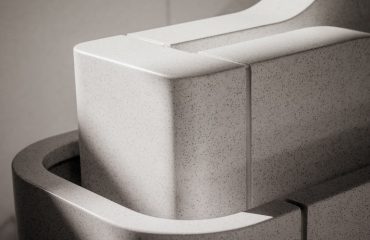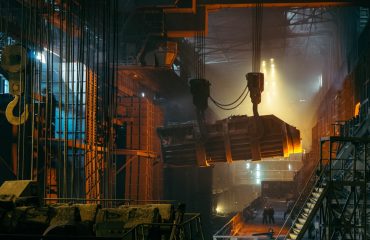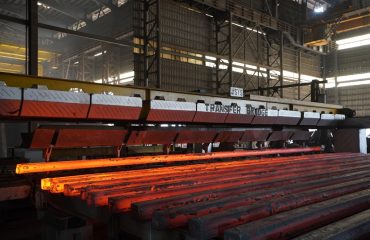Steel frames are ubiquitous in modern construction, offering strength, durability, and design flexibility. However, designing a robust and efficient steel frame requires a deep understanding of structural engineering principles and specific considerations related to steel. This guide delves into the key aspects of steel frame design, providing a comprehensive overview for professionals and students alike.
1. Understanding Design Loads and Codes
The foundation of any successful steel frame design is a thorough understanding of the loads the structure will experience. This involves identifying dead loads (the weight of the structure itself), live loads (occupancy loads, furniture, snow, etc.), and environmental loads (wind, seismic activity). Accurate load estimation is crucial for structural integrity. Design codes, such as the American Institute of Steel Construction (AISC) Manual of Steel Construction or Eurocode 3, provide guidelines and equations for calculating these loads and determining the required strength of the members. These codes also specify allowable stresses, safety factors, and design procedures that must be adhered to for legal and safety compliance. Variations in geographic location significantly influence the design loads; for instance, structures in high-wind zones require significantly stronger frames than those in sheltered areas. Furthermore, understanding the soil conditions is important for foundation design, which directly affects the overall stability of the steel frame.
2. Selection of Steel Sections and Materials
Once the design loads are determined, the next step is selecting appropriate steel sections. A wide variety of shapes are available, including wide-flange beams (W-shapes), channels (C-shapes), angles (L-shapes), and hollow structural sections (HSS). The choice depends on factors like load capacity, span length, cost, and aesthetic considerations. Steel material grades also influence the design process. Higher-strength steels allow for smaller sections, reducing material costs and weight, but may require more specialized welding techniques. Designers use structural analysis software to optimize section selection, ensuring that each member can withstand the applied loads without exceeding allowable stresses. Detailed calculations are performed to verify the adequacy of selected sections, considering factors such as bending, shear, axial compression, and torsion. The software allows for iterative design refinement, enabling optimization for both strength and economy.
3. Analysis Methods for Steel Frame Structures
Accurate analysis is vital for ensuring the structural integrity of the steel frame. Several methods are employed, ranging from simplified hand calculations for smaller structures to sophisticated finite element analysis (FEA) for complex designs. Simplified methods, such as the portal method or cantilever method, are suitable for preliminary analysis and quick estimations. However, for larger and more complex structures, FEA is often necessary to capture the intricate interaction between members and accurately predict stress distributions. FEA software allows for detailed modeling of the structure, incorporating various boundary conditions, material properties, and loading scenarios. The results provide a comprehensive understanding of the internal forces and stresses within each member, enabling designers to verify the adequacy of the chosen sections and identify potential areas of concern. Linear elastic analysis is commonly used for initial design, while non-linear analysis may be necessary to account for effects such as material non-linearity, geometric non-linearity, and the effects of large deformations.
4. Designing Steel Connections
Steel connections are critical for transferring loads between different members of the frame. The design of these connections is just as important as the design of the members themselves. Common connection types include bolted connections, welded connections, and a combination of both. The choice depends on several factors, including the magnitude of the transferred forces, the accessibility of the connection, the fabrication methods, and cost considerations. Bolted connections are often preferred for their ease of fabrication and adjustability, while welded connections provide higher strength and stiffness. Designers must ensure that the connection has sufficient capacity to withstand the applied forces without failure, considering factors such as shear, tension, and bending. Detailed calculations are required to verify the adequacy of the connection, paying close attention to bolt spacing, edge distances, and weld sizes. The connection design must also account for potential fatigue effects, especially in structures subjected to cyclic loading.
5. Detailing and Fabrication Considerations
The final stage involves detailing and fabrication. Detailed drawings are produced, specifying the dimensions, geometry, and connection details of each member. These drawings serve as the basis for fabrication, ensuring that the steel members are manufactured to the required specifications. Fabrication involves cutting, shaping, and assembling the steel members, typically in a workshop before transportation to the construction site. Fabrication processes must adhere to strict quality control measures to ensure accuracy and consistency. Proper detailing is crucial for efficient fabrication and erection. Clear and concise drawings minimize errors and delays during construction. Considerations such as member accessibility during fabrication and erection, transportation limitations, and on-site assembly procedures should all be factored into the design process. Detailed shop drawings are usually reviewed and approved by the structural engineer before fabrication commences, ensuring alignment with design intent.
Designing steel frames is a complex process requiring a multidisciplinary approach. By understanding the factors outlined in this guide, engineers can create robust, efficient, and safe structures that meet the demands of modern construction.
SEO-Friendly Tags:
- Steel Frame Design
- Structural Steel Design
- Steel Connection Design
- Steel Frame Analysis
- AISC Steel Design




